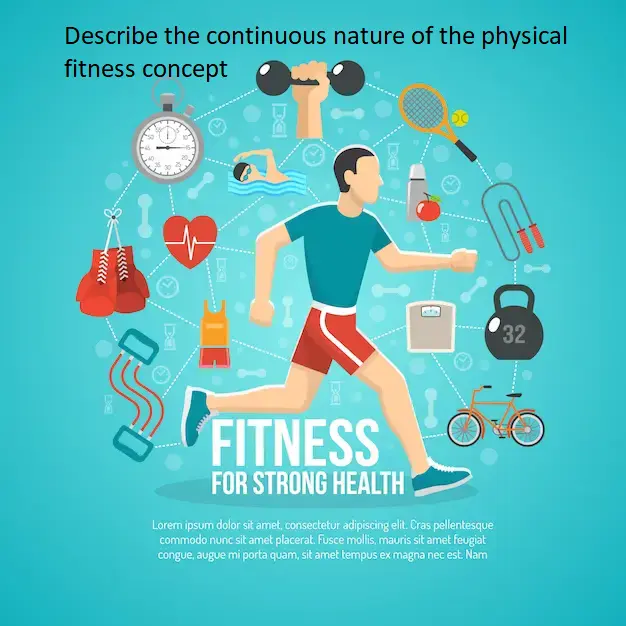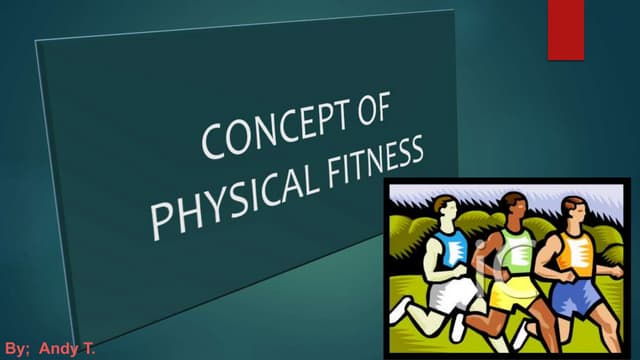Continuous Nature Of The Physical Fitness Concept

The concept of physical fitness, once viewed as a destination attainable through short-term programs, is increasingly understood as a continuous journey requiring sustained effort and adaptation throughout life. This evolving perspective, supported by scientific research and public health initiatives, emphasizes the long-term benefits of consistent physical activity rather than episodic bursts of exercise.
This article explores this shift in understanding, examining the evidence underpinning the continuous nature of fitness, its implications for individual health management, and the societal impact of promoting a lifelong approach to physical well-being. Experts across various fields, from exercise science to public health, are advocating for a more holistic and sustainable model of fitness that prioritizes gradual progress and consistent engagement.
The Science Behind Sustained Fitness
Research consistently demonstrates that the positive effects of exercise, such as improved cardiovascular health, enhanced muscle strength, and better mental well-being, are largely dependent on continued activity. Dr. Emily Carter, a leading exercise physiologist at the National Institutes of Health, explains that "the human body is remarkably adaptive, but this adaptation requires ongoing stimulus. Stopping exercise leads to a gradual decline in fitness levels."
Studies published in the Journal of Applied Physiology have shown that individuals who abruptly cease regular exercise can experience a rapid reversal of many of the gains they achieved, including reduced insulin sensitivity and increased blood pressure. This underscores the importance of maintaining a consistent level of physical activity to reap the long-term health benefits.
The Importance of Gradual Progression
The continuous fitness model emphasizes the importance of gradual progression and personalized exercise plans. Instead of focusing on intense, short-lived fitness challenges, individuals are encouraged to build sustainable habits that can be maintained over years.
This approach acknowledges that individuals have varying levels of fitness, health conditions, and lifestyle constraints. "The key is to find activities that you enjoy and can realistically incorporate into your daily routine," advises Dr. James Lee, a certified personal trainer and author of "Fitness for Life."
He adds, "Starting slowly, gradually increasing the intensity and duration of your workouts, and listening to your body are crucial for preventing injuries and maintaining motivation."
Public Health Initiatives and Societal Impact
Recognizing the importance of continuous fitness, public health organizations are increasingly promoting strategies to encourage lifelong physical activity. The World Health Organization (WHO) recommends that adults engage in at least 150 minutes of moderate-intensity or 75 minutes of vigorous-intensity aerobic activity per week, along with muscle-strengthening activities at least twice a week.
These guidelines are designed to provide a baseline for maintaining overall health and reducing the risk of chronic diseases. Many countries have implemented national programs aimed at promoting physical activity among all age groups, from children to older adults.
These initiatives often include campaigns to raise awareness of the benefits of exercise, community-based fitness programs, and the creation of safe and accessible environments for physical activity.
Overcoming Barriers to Continuous Fitness
Despite the growing awareness of the importance of continuous fitness, many individuals still struggle to maintain a consistent exercise routine. Common barriers include lack of time, lack of motivation, access to facilities, and physical limitations.
Addressing these barriers requires a multifaceted approach, including strategies such as time management, setting realistic goals, finding a workout buddy, and modifying exercises to accommodate physical limitations. Technology also plays a role, with fitness apps and online resources providing convenient ways to track progress and access workout programs.
"It's not about being perfect; it's about making consistent effort. Even small amounts of physical activity can make a difference in the long run," emphasizes Sarah Chen, a public health advocate who has worked extensively on promoting community fitness programs.
A Human-Interest Perspective
Consider the story of Maria Rodriguez, a 55-year-old woman who struggled with obesity and related health problems for many years. After realizing that quick-fix diets and sporadic gym visits were not sustainable, she adopted a continuous fitness approach.
Starting with short walks and gradually incorporating other activities like swimming and yoga, Maria began to see significant improvements in her health and well-being. Over time, she lost weight, lowered her blood pressure, and regained her energy levels. "It wasn't easy, but the key was consistency," Maria says. "I realized that fitness is not a race; it's a marathon."
Her experience illustrates the transformative power of embracing a continuous fitness model. By focusing on sustainable habits and gradual progress, individuals can achieve lasting improvements in their physical and mental health.
Conclusion
The understanding of physical fitness is shifting from a short-term goal to a continuous journey. Backed by scientific evidence and promoted by public health initiatives, this perspective emphasizes the long-term benefits of sustained physical activity.
By adopting a continuous fitness model, individuals can improve their health, reduce their risk of chronic diseases, and enhance their overall quality of life. The key is to find activities that you enjoy, set realistic goals, and prioritize consistency over intensity.
Embracing the continuous nature of fitness is not just about physical health; it's about cultivating a sustainable lifestyle that promotes well-being and resilience throughout life.


















